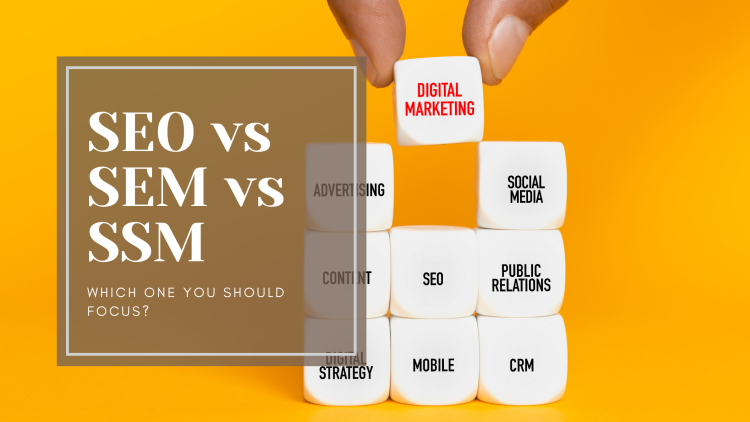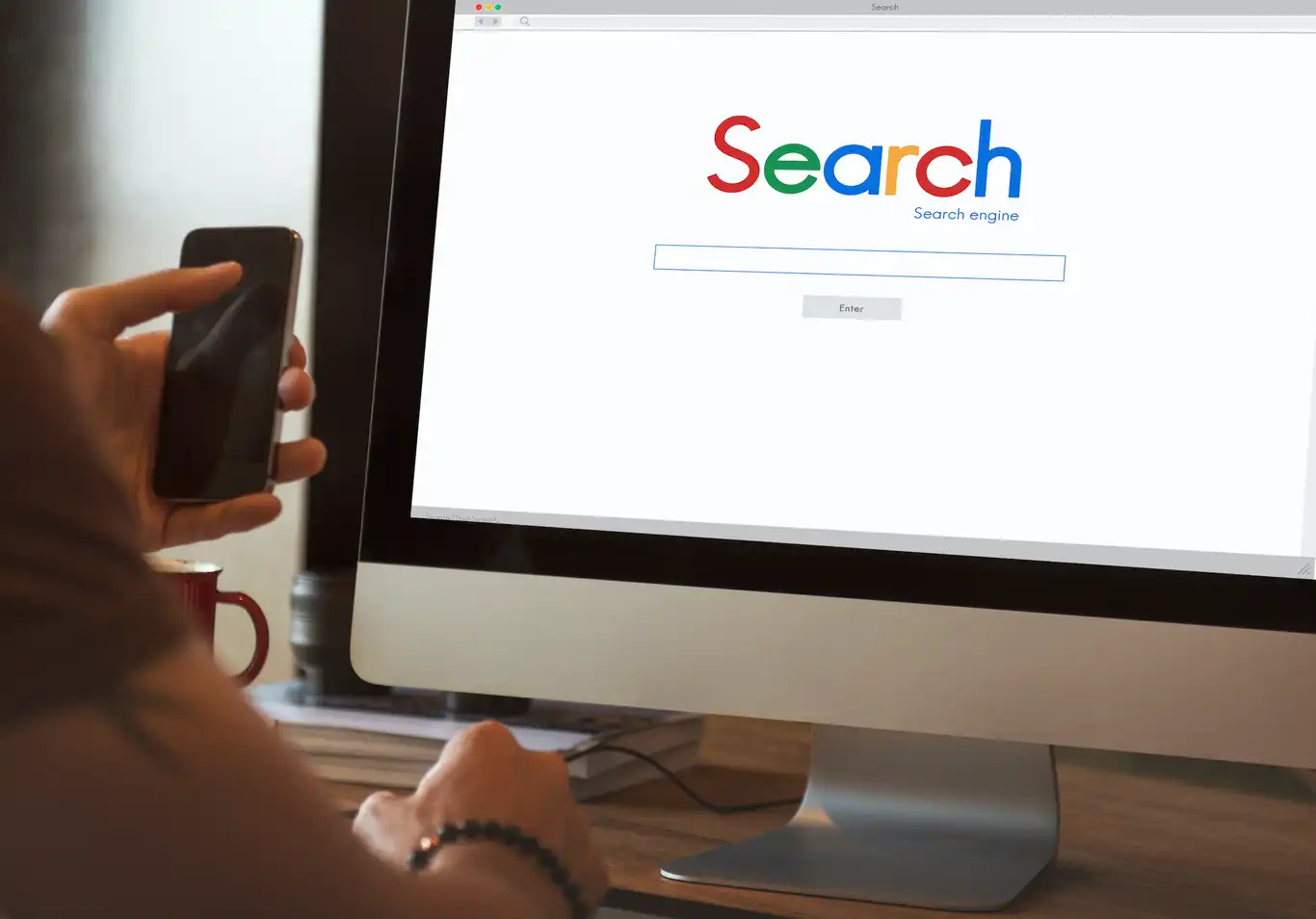

7 Reasons why your website needs Search Engine Optimization
There are billions of Google queries made every day, from general daily life problems to niche specific questions. Among of the massive amount of queries, there is a chance that a portion of it contains something related to your solution.
This means that regardless of what your business offers, your target audience is likely to searching for solutions or products on search engines like Google.
The reason why some of the suggestions is on top of Google, is because they are optimized for search engine. In case you want to have your fair share of free traffic to your website on certain keywords, you will need search engine optimization.
You might searched considered digital marketing services, but might decided to do it on your own. But you do not know where to start.
So the next logical sequence is how to do search engine optimization.
We at Majiska Digital Solutions have made this page, especially to explain on Search Engine Optimization (SEO) and how to benefit from it so you can increase your online presence for your brands or businesses. Do read through as we will share some optimization techniques and tools that could help you in your journey.
Introduction to SEO
Search Engine Optimization, or SEO in short, is an art of improvising your site’s ranking in search engine results.
We called it ‘art’ on purpose, because it is an evolving process and you will need to update with latest SEO best practices from time to time.
Some of the process requires you to identify which keywords and phrases your target audience is using when looking for product or services like yours. The more relevant your content to the search query, the better your ranking will be in search result.
Do You Need SEO? 7 Reasons You Have To
Today, SEO is one of key strategies to make effective marketing strategy.
To fully illustrate its importance, lets go over a few reasons why you should start optimizing your site.
1. SEO helps build your brand
Although branding is often considered a more traditional marketing strategy, while SEO is technically into the digital category, those involves similar steps.
Building a brand requires considering both what you provide, and people’s feedback about it.

Back to optimizing a site topic, we can see the step involved are similar. Your content needs to be in line with your audience’s needs and interests, then find ways to earn links to that content from other sites.
If you keep this relationship in mind as you develop your SEO strategy, you can select keywords and create content that’s in line with the persona you want your brand to carry.
Then, your online presence will reflect your ideal branding - and help you establish it with your target audience.
2. An optimized website earns more traffic
On the surface, the goal of SEO is to improve your website’s ranking in search results.
Beyond that, the purpose of getting better rankings is to attract more traffic to your content, and ideally, to convert that traffic into customers and leads.
In case you’re wondering, it works very well.
For example, just take a look at the following organic traffic report from a Majiska case study.

Over the course on one year, this brand new website’s traffic increased from zero to 100,000 visitors, entirely from SEO.
This concludes that if you want to bring more users to your site in long term, SEO is the BEST way to accomplish that goal.
3. SEO does not require you to pay for ad space
Biggest perk of performing SEO is that it doesn’t need you to pay for ad space.
Let’s consider how traditional ad campaigns operate.
You determine a location where you want your brand to appear, whether that’s on a particular TV channel or radio station, or in the pages of a magazine or newspaper.
Then you pay the company that owns that media for placement. You might pay for your ad to run for a certain length of time, or within a certain number of issues. As soon as that period is up, your ad stops appearing - and stops generating results for your business.
Now, consider the various pages that appear in search engine results.

The top three listings in this screenshot are pay-per-click, or PPC ads, denoted by the small “Ad” tag.
Much like traditional ad campaigns, earning one of these spots involving ongoing costs.
4. It helps your target audience find your site
When your target audience search for specific information, websites with proper SEO will appear in front row of their search result.
If we consider how common for consumers to use search engines to find information about products and services, this is a huge opportunity.
In fact, 62% of consumers turn to search engines first when they want to learn more about new business, product, or services — and 41% of them when they’re ready to buy.

This means that if you want your business to be part of a user’s online research process, it need to show up in search results for keyword related to the product or services you offer.
Plus, according to that same survey, 48% of consumers prefer to visit a business’s official website to learn more about them.
So having a strong online presence will not only help you reach your marketing goals but will also enable your target audience to research and buy in a way that works for them.
5. It boosts your credibility and authority
Internet has revolutionized the way people are looking for a trustable source to solve their problem.
That did not happened 10 years ago, when people starts querying for credibility of source, or validity of the solution. Nowadays, people just ‘trust’ Google to do the hard work of filtering irrelevant information for them.
When your brand or solution appear in top 3 suggestions for related keywords, automatically you are in the ‘trusted’ zone. People most likely to believe what you are selling.
In order to appear in the top 3 search rank, you definitely will need to have your SEO optimization done properly. In sales process, SEO optimized articles sits on the first layer, which readers make a consideration when they get to know about your specialty in your niche.
The conversion starts when you are able to capture their attention on first step. To understand about Content Marketing Strategy, take a look on image below, thanks to Neil Patel’s excellent blog.

6. It can help you stay ahead of your competitors
The process of optimizing SEO for your website does not only resulting in moving your rank in search engines only.
It also will rank your business on top of your competitors, and that is important for growing business.
In 2020 study by Ignite Visibility about Google Click-Through-Rates (CTR), it shows that user most probably click your website, with probability of 43.32%. Position 2 has 37.36% while Position 3 with 29.90% probability to land a click.
This means that as you move up in search results, you will earn large percentage of the clicks for your target keywords — and your competitors will learn less.
7. It’s easy to measure
By implementing SEO, you have access to analytics which helps you to measure your optimization effort.
To do this, you will need to install analytic tools to your site like Google Analytics to monitor website traffic, referral sources, conversions, user devices and any other metrics that matters.
You have the freedom to determine which SEO action is effective, thus be confident on allocating your marketing effort that have the most impact related to your desired goals.
How to do Search Engine Optimization in 2021
The very basic of Search Engine Optimization is simple: to achieve top rank in search results for your target keywords.
The challenge is that Google keeps on improving it’s ranking algorithm. To a point what may work 2 years ago may be obsolete today.
Although the basic remains the same, there are a few ideas that you need to keep in mind as you optimize your site in 2021.
i. Focus on the user
It is impossible to predict the the way Google update on their search engine algorithm.
This is because the company keep it super secret. However, the goal is still the same: to give best experience to the users while using the search engine.
As you working on your site, try to stay focused on the user’s perspective.
Choose related topics to their interest, write content that is helpful and straight forward, and don’t forget to make your site easy to navigate for them.
Doing so will make your site pretty bulletproof to next algorithm update.
ii. Use keyword optimization
Keyword is one of important aspect in determining the page ranks since the early search engine inception. And they are still weigh a lot today.
Auditing on the fly with on-page SEO tools will give the score of keyword optimization. Give it a try.
iii. Optimize your site for the mobile-first index
Since 2016, where smart phones usage starting to grow exponentially, Google has updated their algorithm to weigh more on mobile experience.
They call it mobile-first indexing. Essentially, Google has shifted priority from desktop first to mobile first, as the user base is growing from year to year.
Since then, page with good mobile experience will appear better in search results.
That means if a site does not perform well on smartphones, it will affect its rankings - it will even affect the desktop results too.

SEO Optimization Tools
i. Tools to improve your keyword research
First step of any successful SEO campaign is defining proper keyword. There are several tools specifially designed for you to search the best possible for your business:
ii. Tools to simplify on-page optimization
Optimizing on-page SEO is an essential process. The process involves updating your site to have proper titles & headings, images, meta descriptions, fast loading pages and more. There are tools that can help you on optimizing your on-page SEO:
iii. Tools to improve off-page optimization
While on-page focuses on the website itself, off-page optimization is another important aspect too. It mainly focuses on getting backlink that mentions your website. Activities involved such as guest posting/blogging, social media activity or influencer marketing. Some of tools that can help your journey:
iv. Tools to monitor your results
Doing optimization without data crunching will lead you to nowhere. At some point, you will need to measure which works and which don’t. Here are some tools that can help you:
v. Tools to improve your conversion rate
Ultimately your SEO goal not only just traffic to your website. You will need to convert those traffic to leads and then customers. In order to do so, you will need to make sure your website is aligned to customer’s needs and let them convert to next sales funnel.
The following tools can help you measure your site’s performance:
Conclusion
In this blog post, we discussed about the impact of having a proper SEO optimization done to your business or brand.
You will need to remember that SEO is a complex, often taking long time to see real impact on your business. If you want immediate traffic, you will have to pay for it. That means you will need to consider on investing in Search Engine Marketing or Social Media Marketing to drive traffics to your website.
Even though it takes long term to achieve a significant rank for your target keyword, it is worth it. The ‘passive’ way of generating web traffic proven to be more reliable in long run.
In case you are still wondering on importance of SEO, the answer is crystal clear: it is one of the best way to achieve your marketing goal. If you need bespoke SEO services for your business, we have our in-house team to help you on achieving your goal.

